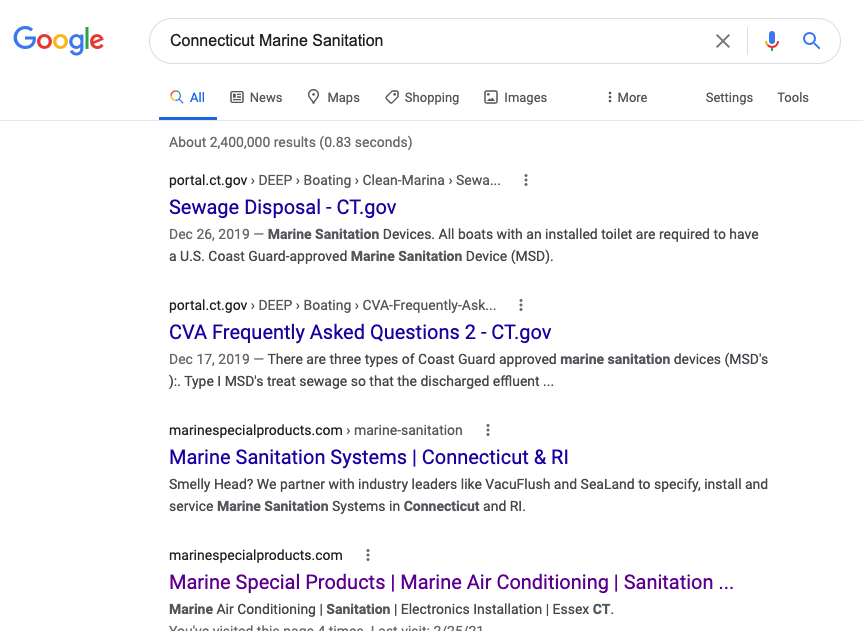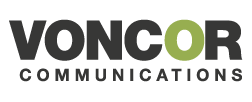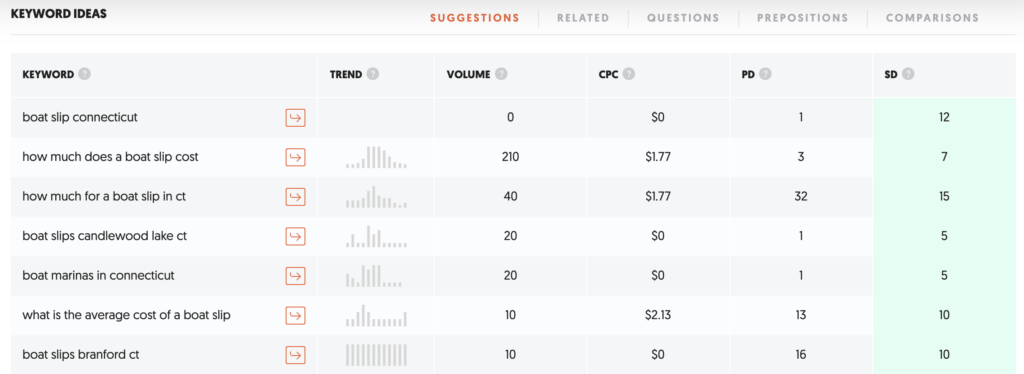Is your recreational or commercial marine services company website not generating sufficient leads for you to execute your business plan? Or are the leads the site is generating not of the highest quality? It might just be your Search Engine Optimization (SEO) efforts that are behind the lackluster results. Following are five relatively easy Marine Services Company SEO fixes to existing websites to enhance their performance.
What is SEO for Marine Marketers?
Search Engine Optimization, or SEO, are the tactics a company or marketing agency takes to elevate your website’s position within search engine results. Ideally, you want to be on the first page of the results because this dramatically increases the likelihood that someone searching for your services will visit your website.
Google takes into account over 200 ranking factors when calculating where a website should be placed within search results. Rarely will a recreational or commercial marine services customer look beyond the first two pages of search results before contacting and finding a provider. The same is true for Bing and other search engines. While it might seem daunting to address the complete spectrum of factors, the good news is there are tactics you can implement to improve your SEO performance. What’s more, these steps – which involve on-page content, back-end programming, and off-website properties – don’t require a major (and potentially costly) overall of the existing content on your website.
Make sure your content is driven by the right keywords
There are two audiences for your website – prospective customers, who want to learn about products or solutions of interest to them and the search engine algorithms, that respond almost entirely to keywords (both on-page as well as in the backend metadata of your website). If your on page content hasn’t been developed with the right keywords incorporated in the right places, it will not perform as well as a competitors website which has taken this into account.
Given this, the first thing you should do is make sure the right keywords are being utilized on your website. For example, if you are a marina, are you more interested in seasonal slip rental? Or do you want to attract transient slip rentals? If you provide marine services – do you focus on electronics? Boat sanitation? Air conditioning and heat? Each of these areas of desired focus can be programmed into your website metadata with keywords.
Once you have pulled together a list of candidate keywords or key phrases, you can use a wide variety of SEO tools to refine and solidify the list. One such tool is Ubersuggest, which can help you find relevant keywords relating to your business as well as showing you the search volume. The example below suggests “how much does a boat slip cost” might be a better keyword than “how much for a boat slip in ct ” because it gets more searches.
Other tools we use and you might consider having a look at are SEMrush, LongTailPro and AnswerThePublic or, if you are looking for no-cost solutions, Google Trends and Google Keyword Planner.
Upon finalizing those keywords or keyphrases you determine will attract potential customers, you should edit your website or webpage copy to incorporate them in a natural and organic manner. It’s important to strike a balance between the amount of copy on your webpage and the number of times you use your keyword as search engines will penalize you for “keyword stuffing”. A good resource for this is put out by GeoRanker or Internet Marketing Ninjas.
Utilize keywords properly in website metadata (backend)
As referenced above, in addition to the content visitors see when they land on your website, there is an entirely separate component of your website where these keywords come into play: the backend metadata. This is the section of your website where you add the information which search engines use to index your page and to describe your page to people using these search engines to find something.
Specifically, in the backend of any website or webpage, depending on the content management system (CMS) you are using, you have the ability to add focus keywords (most important), secondary keywords, title tags (the name or title of your webpage) and meta descriptions, which describe to both search engines as well as website users what your website or webpage is about.
In this example for our client, Marine Special Products Group, we’ve used “Connecticut Marine Sanitation” as the Focus Keyword, “Connecticut & RI” as a secondary keyword and then written the Title Tag and Page Description to reflect those keywords. The first page rankings here are Connecticut State marina sewage services, followed is by our pages for Marine Sanitation and our Marine Services page.

You also need to attach SEO metadata to pictures and graphics on your website. There are two key elements – Alt-tags, which is copy that a web browser will show when images don’t load, and alt-text – used as a caption for the image. Both of these elements should contain your focus and/or secondary keywords. What’s more, proper SEO practice dictates that images should not be any larger than is necessary for visitors to properly experience the image. The larger the image file, the slower the website is to load and search engines reward fast-loading websites with higher rankings.
As with keyword selection, there are a number of great tools which can help you develop optimal website metadata copy. In my opinion, one of the best is Moz, which has both free and low-cost paid solutions (which will also analyze your website for SEO performance). Industry standard Search Engine Journal also provides great, free content for title tag development as does website SEO guru Neil Patel.
Incorporate Links into your content & gain reputable Backlinks in return
If you’ve researched SEO even in a rudimentary fashion, you’ve probably heard something about the value of backlinks. These are websites which have incorporated a page from your website into their content and, if these are from high-quality websites which are relevant to your industry, these backlinks can help your website rank better with Google and other search engines. But they must be relevant, high-quality links otherwise they might hurt your SEO.
The first step in gaining high-quality backlinks is to make a list of companies or organizations which are relevant to your industry: material manufacturers, local distributors, go-to-market partners – general contractors, sub-contractors, aligned service providers such as surveyors, inspectors, etc. – and figure out how to incorporate them into your current content. Just having these links helps with SEO. It also shows your partners that you (and your customers) value their contribution to your product or service.
Once you have this list amassed, you should evaluate your pool of potential backlinks to see which will have the most impact on your business. There are tools for this and two of the best are the Ahrefs Domain Authority checker and the Moz Link Explorer. Once you know which links would be most valuable for your site, approach these partners and request that they link to your content. Some suggestions for ways to gain backlinks: ask a partner to do a guest post on your blog, to comment on a blog post you have on your site or to provide you with a testimonial or review.
Name, Address and Phone Number Directory Consistency
While on the subject of backlinks, website directories are a terrific resource for getting links to your website. Especially those directories that have a high level of authority in your business area. For example, marinas.com, marineweb.com or dockwa.com are national directories for listing marinas. Marine services contractors might look to list with local trade organizations, like the CMTA in Connecticut or RIMTA in Rhode Island, or local chambers of commerce such as the Old Saybrook, Essex or New London chambers.
However, you must make sure that the Name, Address and Phone number for your website is the same as what you input into these directories. This is because the search engines reward websites that have NAP (name/address/phone number) consistency across their directories. And it’s not just the directories you are hoping to get backlinks from – your business has been listed in tens or hundreds of directories across the internet. Websites like Yelp, Yellowpages.com, Superpages, etc. have all listed your information whether you know it or not. And if your business has moved or changed/added a phone line during its existence, you probably have a NAP consistency issue.
Luckily, there are some great tools out there for discovering how your business is listed and for automating the process of making this information consistent. The two that we use with very good results are BrightLocal, which also has other features to help with local directory marketing and Moz Local, which has a bit of a learning curve that once mastered can provide great value for local directory marketing.
Google My Business
Last, but not least, is the importance of a well-maintained Google My Business (GMB) Listing. GMB is a directory listing profile that a business owner (or their agency) can manage to provide tailored information on the Google listing results page when their business name or related services are part of a Google search. The GMB profile we created for our client Connecticut Roofcrafters is shown below – we added logo, opening hours info, address, services and we also maintain the page with frequent updates about offers, services, etc.
Not only do GMB profiles provide a business with a higher profile footprint on the Google Results page – it also helps to improve Search Result rankings, as this article from Search Engine Journal illustrates.
There is no charge to set up a GMB page for your business – you merely need to click the Google My Business link and set up the page. However, if you own a small business, I’m sure at some point during the last year you’ve received a phone call or an email from someone saying that your GMB listing is about to expire or that it needs maintenance. In 99 out of 100 cases, you should immediately hang up or delete this email. These companies are being disingenuous, as a recent blog post of ours indicates. That said, there is some expertise required to optimize these listings and we’ve done it many times for our clients over the years so if you want help with your listing, please contact us.
We hope these five steps have given you an idea of what SEO for commercial and recreational marine companies looks like and how you can improve your rankings. While it is time-consuming, it can pay off once you put the pieces in place. However, if you and your staff are focused on servicing customers (a reality in many small to mid-sized businesses), we’d be happy to help. Please contact us for a no-cost consulting session on how to improve your construction business’s SEO results.



Recent Comments